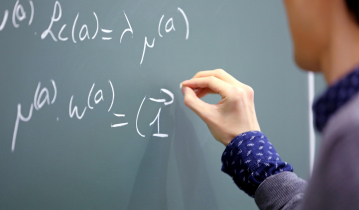Shuguang ZHU soutiendra sa soutenance de thèse sur le sujet "Three Essays on Mechanism Design, Information Design and Collective Decision-making" Mardi 19 juin 2018, à 10h00, salle MS 003 (Manufacture des Tabacs).
Directeur de thèse : Takuro YAMASHITA
Le jury sera composé de :
- João Correia da Silva, Université de Porto
- Takakazu HONRYO, Université de Mannheim
- Renato GOMES, Toulouse School of Economics , Université Toulouse Capitole
- Takuro YAMASHITA, Toulouse School of Economics , Université Toulouse Capitole
Résumé (en anglais):
This thesis investigates several topics in Microeconomic Theory, with a focus on incorporating information control into mechanism design, checking the robustness of mechanisms, and providing a foundation for inconsistent collective decision-making. This work helps to optimize information transmission and acquisition in organizational communications, advertisement and policy design. It also sheds light on how inconsistent group decisions derive from heterogeneity in group members, and proposes ways to restore efficiency. The thesis consists of three chapters, each of which is self-contained and can be read separately.
The first chapter studies a mechanism design environment where the principal has control over the agents’ information about a payoff-relevant state. The principal commits to an information disclosure policy where each agent observes a private signal, while the principal directly observes neither the true state nor the signal profile. Examples include (1) assessing whether a new product matches consumers’ preferences through their feedback on sample product trials, and (2) gathering intelligence by authorizing investigators to collect various aspects of information. I establish optimality of individually uninformative and aggregately revealing disclosure policy, where (i) each agent obtains no new information about the state after observing any realization of his own signal, but (ii) the principal can nevertheless infer the true state from the agents’ reports about their signals. Furthermore, this optimal disclosure policy admits simple and intuitive implementation (such as certain types of blinded experiments, or restrictions on access to certain information) under additional assumptions. If attention is restricted to linear settings, I characterize a class of environments (including those satisfying the standard regularity conditions in mechanism design) where an equivalence result holds between private disclosure and public disclosure.
The second chapter, co-authored with Takuro Yamashita, is motivated by Chung and Ely (2007), who establish maxmin and Bayesian foundations for dominant-strategy mechanisms in private-value auction environments. We first show that similar foundation results for ex post mechanisms hold true even with interdependent values if the interdependence is only cardinal. Conversely, if the environment exhibits ordinal interdependence, which is typically the case with multi-dimensional environments, then in general, ex post mechanisms do not have foundation. That is, there exists a non-ex-post mechanism that achieves strictly higher expected revenue than the optimal ex post mechanism, regardless of the agents’ high-order beliefs.
The third chapter shows that dynamic inconsistency in collective decision-making can derive from heterogeneity in group members’ outside options (i.e. opportunity costs that individuals have to pay in order to join the group), even if individuals share the same exponentially discounting time preference. This model of endogenous dynamic inconsistency facilitates the analysis of welfare consequences, since time-consistent individual preferences allow for a well-defined measurement of social welfare. We further characterize the optimal Bayesian-persuasion information disclosure policy, which takes the form of upper revealing rules, to alleviate the welfare distortion caused by inconsistent collective decisions. Our framework proves to be highly adaptable to various contexts, including provision of public facilities and assignment on team work.


